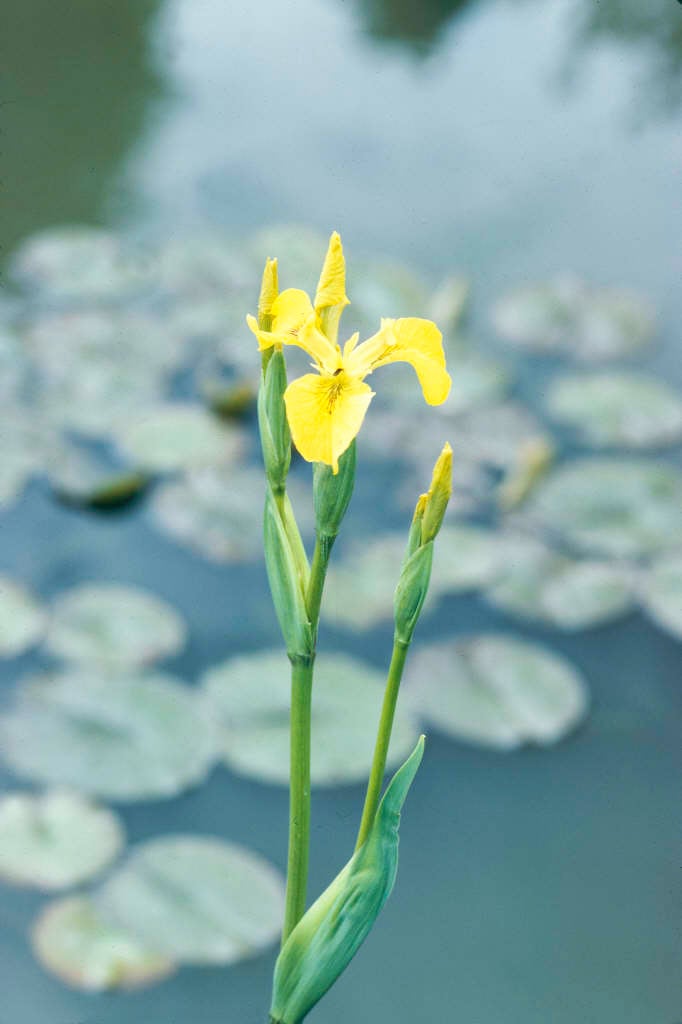Iris pseudacorus
yellow iris
A vigorous herbaceous perennial, forming extensive colonies to 1.5m in height, with waxy grey-green leaves and bright yellow flowers up to 10cm in width, the falls with brown veining in the centre, in mid and late summer
Other common names
daggersflagon
see moreJacob's sword
water flag
water skegs
yellow flag
yellow fleur-de-lis
iris felen
Size
Ultimate height
1–1.5 metresTime to ultimate height
2–5 yearsUltimate spread
1–1.5 metresGrowing conditions
Moisture
Poorly–drainedpH
AcidColour & scent
| Stem | Flower | Foliage | Fruit | |
| Spring | Green Grey Silver | |||
|---|---|---|---|---|
| Summer | Yellow | Green Grey Silver | ||
| Autumn | ||||
| Winter |
Position
- Full sun
- Partial shade
Aspect
South–facing or East–facing
Exposure
Exposed or Sheltered Hardiness
H7Botanical details
- Family
- Iridaceae
- Native to GB / Ireland
- Yes
- Foliage
- Deciduous
- Habit
- Clump forming
- Potentially harmful
- Harmful if eaten. Wear gloves and other protective equipment when handling. Pets: Harmful if eaten. For further information and contact numbers regarding pets, see the HTA guide to potentially harmful plants
- Genus
Iris may be rhizomatous or bulbous perennials, with narrow leaves and erect stems bearing flowers with 3 large spreading or pendent fall petals, alternating with 3 erect, often smaller, standard petals, in late winter, spring or early summer
- Name status
Correct
- Plant range
- Europe Africa Asia
How to grow
Cultivation
Grow in wet, deep, acid, humus-rich soil in full sun or partial shade. It thrives at the margins of large ponds or streams; has the potential to become a nuisance if not managed well, so plant with care. See aquatic weeds for more information
Propagation
Propagate by division from midsummer to early autumn, plant immediately in flowering positions
Suggested planting locations and garden types
- Cottage and informal garden
- Wildflower meadow
- Wildlife gardens
Pruning
Remove any dying foliage in autumn, old flower stems can be cut down after flowering
Pests
Diseases
May be susceptible to aphid borne viruses, bacterial soft rot and grey moulds (Botrytis)
Get involved
The Royal Horticultural Society is the UK’s leading gardening charity. We aim to enrich everyone’s life through plants, and make the UK a greener and more beautiful place.
